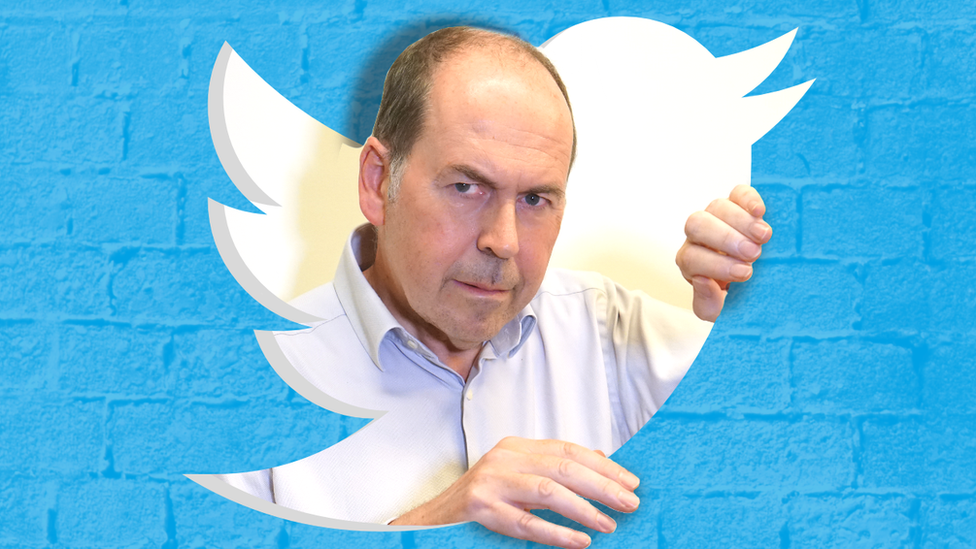Tech Tent: Is Twitter besieged by bots?
- Published

How should we see Twitter? An essential communications tool? A noisy but enlightening platform for democratic debate? Or a haven for hate speech often driven by armies of bots designed to inject poison into every conversation?
In this week's Tech Tent podcast, we examine how the social media firm is facing accusations that it is failing to police its platform properly.

Stream or download, external the latest Tech Tent podcast
Twitter is in the spotlight after it emerged that it was used by Cesar Sayoc, the man accused of a bombing campaign aimed at leading American politicians.
In at least one case, someone reported a threat by Mr Sayoc but was told that Twitter's rules had not been broken.
Meanwhile, there is evidence that many of the raging debates on Twitter are driven by bots. In other words, when you see thousands of angry tweets about a news story, they may be generated automatically by a computer, not a human.
That is the verdict of a group of students at the University of California in Berkeley. They have created a tool called factcheck.me that allows anyone to track bot activity and understand how viral photos and links take off.
Kyle Rentschler, one of the team behind the project, told Tech Tent that as many as 60% of the tweets about a migrant caravan making its way through Mexico towards the United States were generated by bots.
How can he be sure that these were not human tweets?
"Many of these accounts tweet at inhuman levels, like a tweet every minute or so, for days or weeks at a time," he says.
But the tweets are not all coming from one side of the argument. Some are fear-mongering about the caravan, others are dismissing the whole affair as a mythical problem.
While Twitter did start rooting out the bots in the summer, Kyle says there is still a long way to go: "It's still a huge issue and nowhere near to being solved."
Debunking
Another area where Twitter is under fire is over its handling of complaints about fake news designed to stir up hatred.
Early this week, a number of Twitter accounts shared a photo of what they claimed was billionaire George Soros in a Nazi uniform back in World War Two.
It was an obvious lie. The Twitter account of the Auschwitz Museum responded by pointing out that the picture was of Oskar Groening, a member of the SS. George Soros was only 14 at the end of the war.
After the deadly attack on a Pittsburgh synagogue, and with Soros among those targeted with bombs through the post, this was both an anti-Semitic smear and fake news.
But try to report a Tweet as a lie and you run up against a problem. Fake news is not a category that Twitter lists as a cause for action. And while many people have been reporting the fake photo as "abusive or harmful" it is still going viral on Twitter.
Tech Tent asked Twitter for an interview about these issues but was told that nobody was available.
The company provided a lengthy statement, which did not answer our detailed questions about that Soros smear. It did say Twitter was moving with a "sense of urgency and commitment" to improve the health of the public conversation.
It continued: "We're not always going to get it right but we firmly believe that we need to be thoughtful and considered in our approach, balancing freedom of expression with people's absolute need to feel safe online. While we welcome everyone to express themselves on our service, we will not tolerate behaviour that harasses, threatens, or uses fear to silence the voices of others."

Also on the podcast this week:
Bitcoin is 10 years old! Has the dream of a decentralised currency flowing smoothly around the world come true?
And the classroom in the cloud: Rahul Tandon reports from the rural Indian school where the teaching is all done over the internet
Stream or download, external the latest Tech Tent podcast